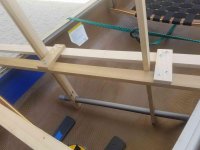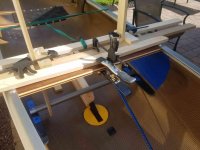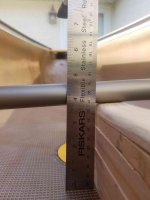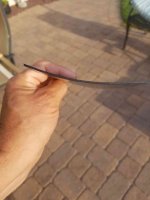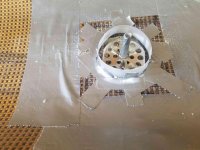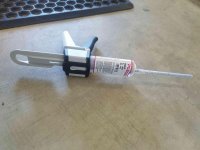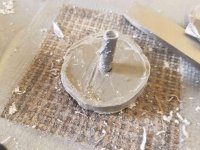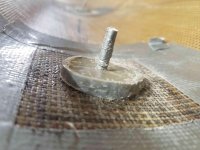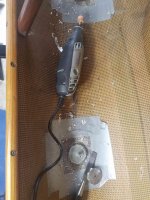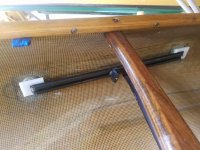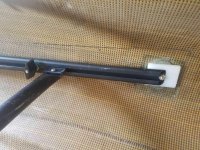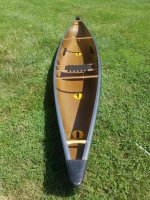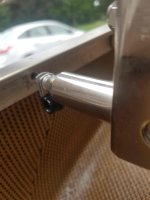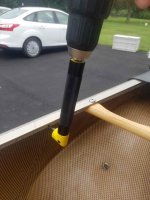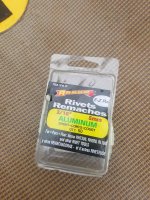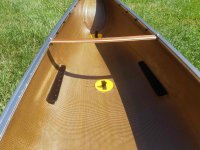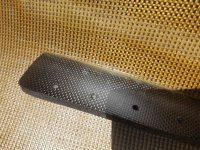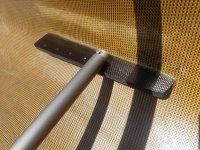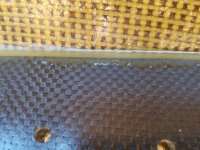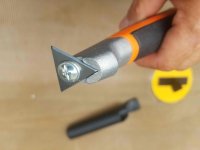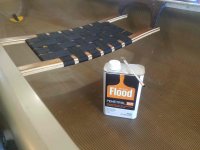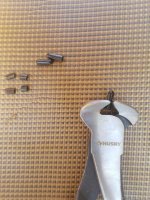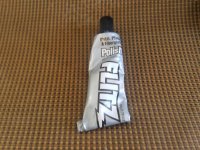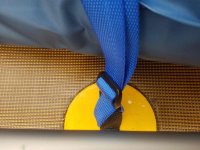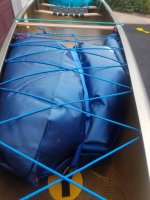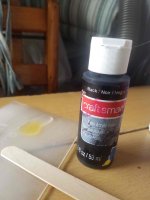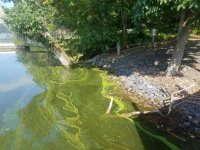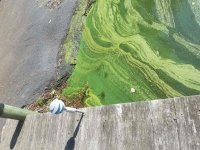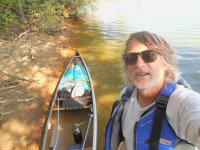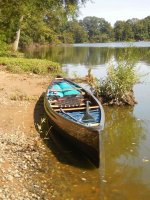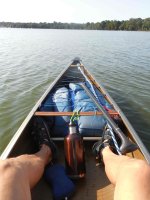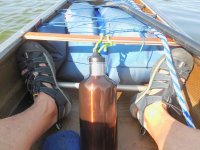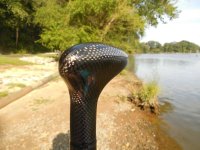G
Guest
Guest
I made violent progress as the sun went down on this heat-advisory and (poor) air quality alert day.
I remembered the trick of using tape as a measuring device. I cut six strips of blue tape 12" long, and applied three on each side adjacent, so that they give me a reference line 6" below the inwale. Sanded the 12" by 1/2" area where the mounting blocks will adhere, with about a 1/4" bleed out on either side of the 1/2" area, for the adhesive to flow to.
The Kydex worked like a charm! I will post some pictured tomorrow of how the sanding goes.
Then, I will set up the "h" frame, set the canoe in the grass, and double check that I measured everything correctly and thought everything through.
I am inclined to gflex the mounting blocks in initially, with a minimal amount of gflex to start, let it set, and then work from there on how to strengthen it appropriately.
Glenn, thanks for the thoughts and pics on the wenonah footbrace mounting solutions. I still think the stud idea was a good one, as one can switch out different (better, lighter, replacement) footbraces if and as needed. My poor execution was the problem.
I like that the wenonah footbraces let your feet get close to the hull when resting on the bar. That is where my feet usually are. The one possible drawback of the northstar footbar is the mouning blocks stick out about 2" from the hull. This forces the foot away from the hull when resting on the bar. Time will tell whether that is an issue for me. Even if it is, this footbar ain't going anywhere.
Due respect to Wenonah but, with regard to its latest style of footbrace, either I got a defective one, or the engineering is defective. The one I have won't stay put. Very irritating.
I remembered the trick of using tape as a measuring device. I cut six strips of blue tape 12" long, and applied three on each side adjacent, so that they give me a reference line 6" below the inwale. Sanded the 12" by 1/2" area where the mounting blocks will adhere, with about a 1/4" bleed out on either side of the 1/2" area, for the adhesive to flow to.
The Kydex worked like a charm! I will post some pictured tomorrow of how the sanding goes.
Then, I will set up the "h" frame, set the canoe in the grass, and double check that I measured everything correctly and thought everything through.
I am inclined to gflex the mounting blocks in initially, with a minimal amount of gflex to start, let it set, and then work from there on how to strengthen it appropriately.
Glenn, thanks for the thoughts and pics on the wenonah footbrace mounting solutions. I still think the stud idea was a good one, as one can switch out different (better, lighter, replacement) footbraces if and as needed. My poor execution was the problem.
I like that the wenonah footbraces let your feet get close to the hull when resting on the bar. That is where my feet usually are. The one possible drawback of the northstar footbar is the mouning blocks stick out about 2" from the hull. This forces the foot away from the hull when resting on the bar. Time will tell whether that is an issue for me. Even if it is, this footbar ain't going anywhere.
Due respect to Wenonah but, with regard to its latest style of footbrace, either I got a defective one, or the engineering is defective. The one I have won't stay put. Very irritating.

